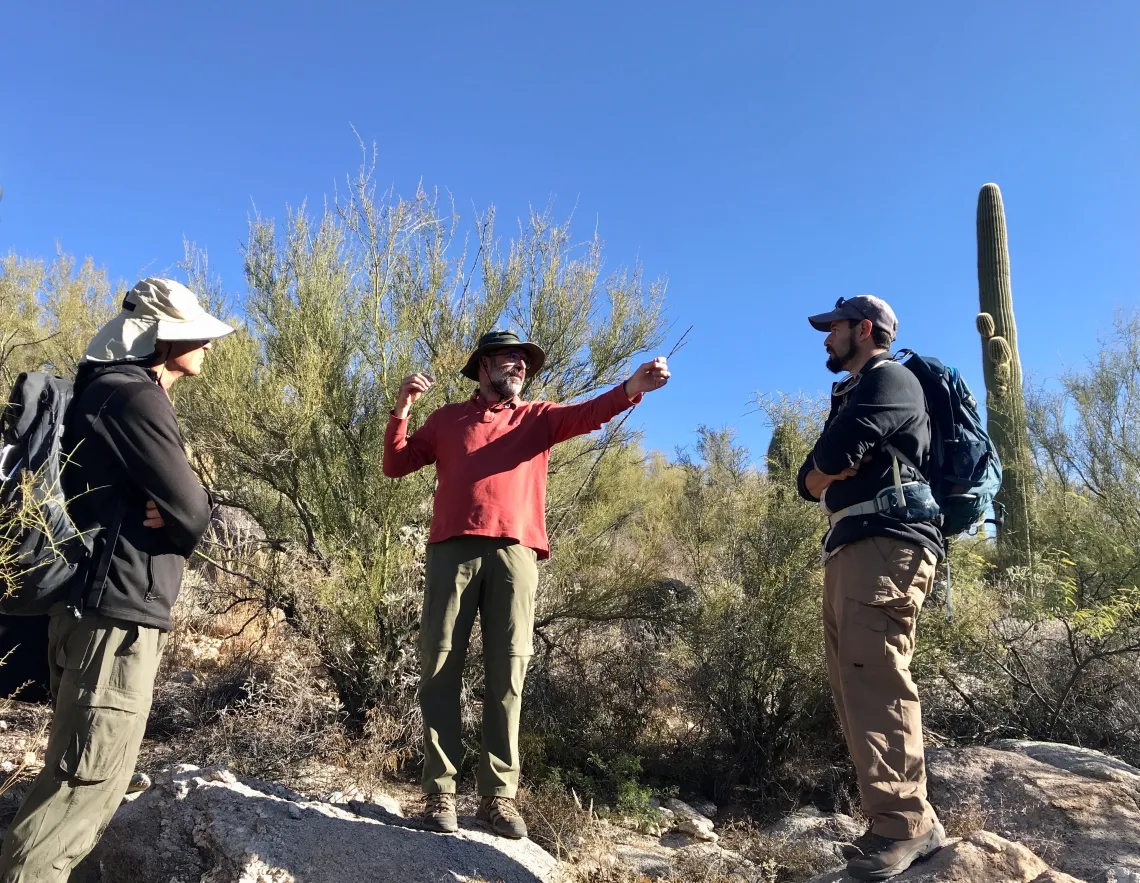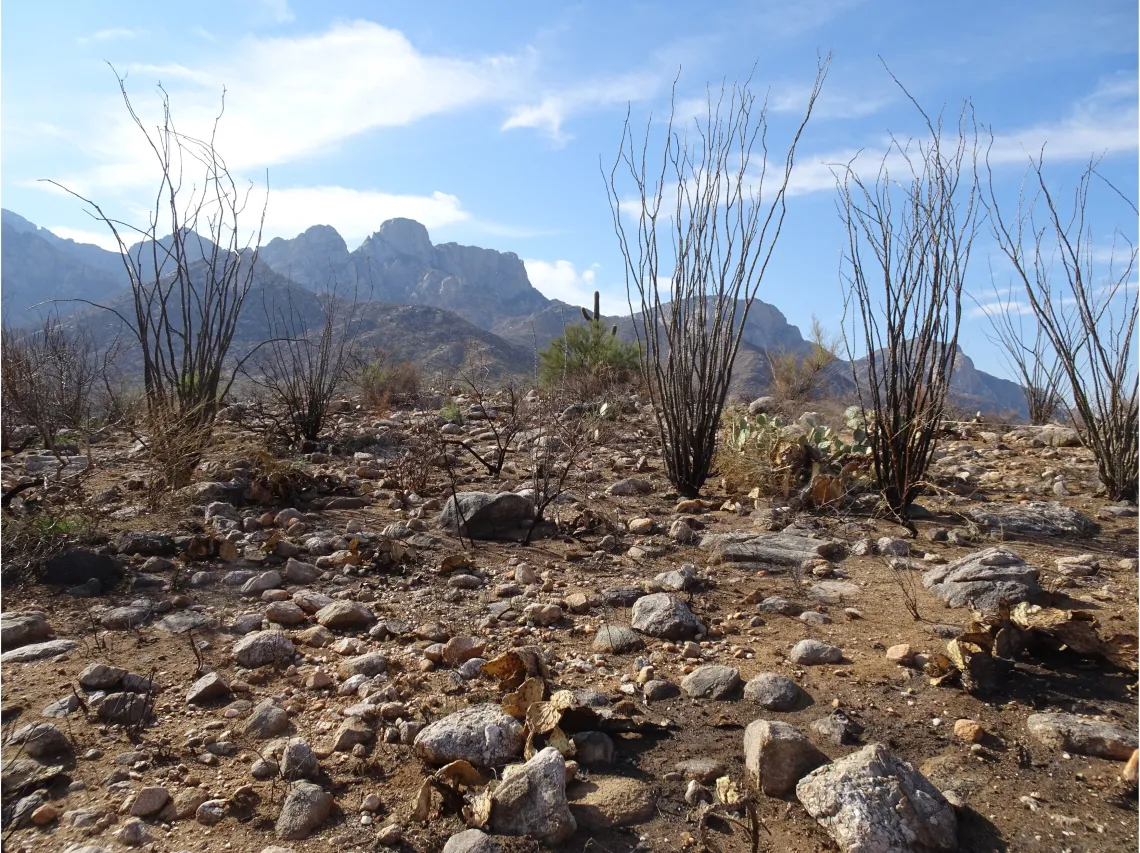New Life: Growth and Collaboration After the Bighorn Fire

In the summer of 2020, the Bighorn fire ravaged the Santa Catalina Mountains, burning over 120,000 acres at the edge of Tucson, Arizona. In the wake of such destruction, it was hard to imagine new life emerging from the ashes. But nearly three years later, as green shoots are starting to peek out their heads even in the most burned areas, so too are new ideas blossoming among ecological researchers. Two of them, Dr. Ben Wilder and Dr. Michael Canva, are gleaning innovative research from the disaster.
Where others saw destruction and desolation, desert ecologist and biogeographer Wilder saw an opportunity. He realized desert habitats like the Catalina State Park had never experienced fires the scale of the Bighorn fire. If he acted quickly, the months and years after the fire would provide important insights into how native and non-native plant species recover (or don’t) from large-scale fires. With the help of CNRS, Wilder established twenty research plots in Catalina State Park in the fall of 2020. He located half the plots in the burned area of the park and half in the non-burned habitat. He also divided the plots between vegetation types, desert grassland and desert scrub, to measure their different recovery times. Then it was time to wait and observe.

Burned Desert Grassland, just after Bighorn fire, Oct 2020

Same location, Oct 2022
Now, with three years of data in hand, surprising results are coming through. Despite a widespread cover of largely non-native grasses in the burned areas, there is a good deal of native plant diversity returning to the area. Many desert species previously assumed to be vulnerable to fires have resprouted—little-leaf palo verde, blue-palo verde, limber-bush, fairy duster, range ratany, mallows, and ferns. The mortality of burned saguaros is also lower than expected.
Hundreds of miles away in Canada, CNRS researcher Michael Canva and his team were conducting their own innovative research. As director of the LN2 International Research Laboratory at the University of Sherbrooke, Québec, Canva was especially interested in the emerging field of nano-bio-plasmonics. For the past few years, he and his team have worked on developing biochips and sensing instrumental systems for monitoring environmental conditions such as temperature, solar radiation, and moisture in hyper-localized areas.
A few years ago, Canva assembled a large consortium of scientists based mainly in the North American network of the CNRS international laboratories. All participants of the initiative, titled Initiative Planete A, agreed that interdisciplinary, international research was essential in tackling climate-related issues. Canva connected especially well with the International Research Laboratory iGLOBES team from the University of Arizona, and both teams started brainstorming future points of collaboration.
After the Bighorn fire, iGLOBES and LN2 finally were able to put theory into practice. Wilder and Canva and their respective teams evaluated how Michael's monitoring devices could quantitatively measure the environmental conditions in which the local flora was growing back after the fire.

From left to right: Regis Ferriere, Ben Wilder, Michael Canva, Ruth Gosset, Morgane Noel, Sky Dominguez
In November of 2022, Canva was finally able to visit the Catalina State Park site in person. After traveling to the University of Arizona for a France-Arizona Institute/iGLOBES-related workshop, he, Wilder, and others from the University of Arizona traveled to Catalina State Park to visit Wilder’s research sites. Afterward, the two researchers agreed to continue their collaboration by installing a second generation of instrumentation in the plots. They plan to deploy meteorological sensors to quantify microsite differences in temperature, solar radiation, and moisture in and above the soil to compare the burned and non-burned vegetation types.The research being conducted by Wilder and Canva is critical for predicting desert resilience in a fire-prone future. Their work highlights how interdisciplinary, international collaboration can tackle impending natural disasters due to climate change.
